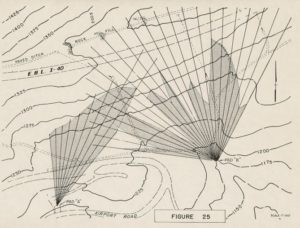hydrauger fan
River and Road Crossings for Utility Installation
While directional drilling for oil and gas has been around for nearly a century, its use for utilities is approximately half that.
The first directionally drilled utilities were short gas line road crossings and connections, again in California, in the late 1960s. But it was Martino Cherrington’s 1971 crossing of the Pajaro River near Watsonville, CA that really ushered in the new era of HDD. And by the early 1980s, horizontal directional drilling (HDD) as we now know it was being used across the US to install utilities, big and small, under rivers and roadways.
The next big advance was in navigation. With longer river crossings, the slow and expensive process of sending a camera down hole to snap pictures of a compass by the drill bit, and using it for navigating, still made economic sense.
But for short road crossings, where accuracy was still important, this cumbersome process was not viable. With the advent of computing technology, and perhaps more importantly, microcomputing, transmitters were developed that could be placed down hole, and tracked from the ground surface.
While these systems were initially not as accurate as the more expensive systems, they were fast, and accurate enough for use on short shallow bores. Soon drillers could not only know where a drill bit was, but also its orientation, and with that, HDD came into common use for underground utility installation.
